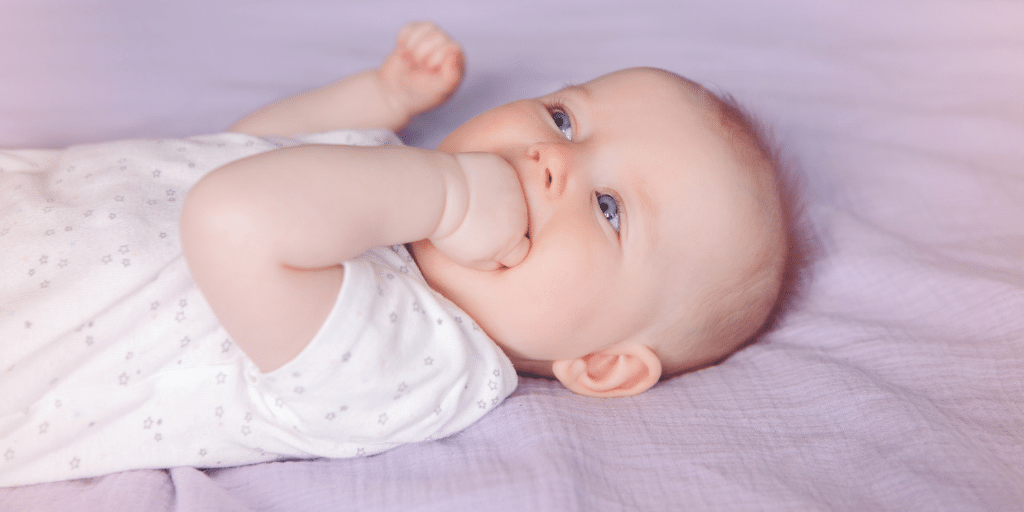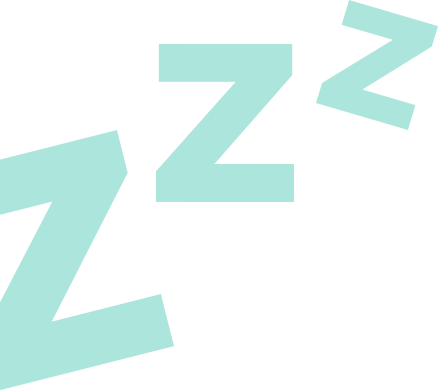Confused as to How Teething Leads to Sleep Regression? We Explain
This tricky time in a baby’s young life can lead to pain, fever – and sleepless nights. Learn how to tackle the dreaded teething sleep regression.
Babies have an awful lot of growing and developing to do before they even start to walk and one of the biggest changes that affects them is starting to get their baby teeth.
Most babies start to get the first tiny teeth pushing through the gum from around six months, though it can start earlier or later than that – all babies are different.
Because your baby’s teeth are already present in the gum at birth, the process of their pushing upwards through the gum to their proper positions naturally causes discomfort at best and pain at worst. Some babies even get a fever when they are cutting a tooth. Red cheeks, dribbling and a miserable baby are common signs of teething and of course, one of the first things to suffer when your baby is uncomfortable is their sleep.
When your baby is cutting a new tooth, the pain and discomfort can wake them up from a nap or from their night time sleep. This is called sleep regression, when a baby who has previously settled into a good sleep routine starts to sleep in a different, more sporadic pattern, waking up at different times, or being more difficult to settle. Teething can affect a baby’s appetite too, meaning that they may miss a feed and then wake up hungry.
They’re too little to tell you what’s going on, so you have to do a little detective work. Here are the main signs that your little one is teething:
- They have a slight temperature (around 38°c)
- You can see that the gum looks red, sore, or has a white spot underneath – this is the tooth breaking through
- They have red, flushed cheeks that feel hot
- They have a rash on their face or around their mouth where they are dribbling
- They are dribbling a lot more than usual
- They are rubbing or pulling their ears
- They try to chew anything
- They are more unsettled or fussy than usual
- They’re not eating in their usual way

How Do I Help My Baby’s Pain When Teething?
It’s instinctive to want to ease your baby’s pain and discomfort when they are teething and it will also help them to sleep well too, so try these simple ways to ease the pain of teething”
- Offer a teething ring or toy that they can chew. This helps distract from pain and aids the tooth to get through the gum more quickly. Teething items can often be put in the fridge and the cold can really help ease those sore, swollen and painful gums.
- Offer healthy snacks to chew on, such as apple, carrot or breadsticks f they are over six months old. Always supervise your child when eating to avoid choking.
- Try rubbing some teething gel or granules onto the gums. Ask you pharmacist for a baby-safe option.
- If your baby is generally grumpy and in pain, you can give a baby-safe pain relief. Make sure you follow the instructions for the correct dosage.
- Give them plenty of cuddles to help them feel reassured and comforted.
- Keep plenty of bibs and muslins at hand to dry any dribble and prevent rashes before they start.
Once the new tooth is through, you should go back to your usual bedtime and sleep routine. It shouldn’t take your baby long to get back into their normal pattern of sleep, wake and play times – until the next tooth comes along!
Further Reading:
What Is Sleep Regression and Why Does It Happen?
How Can I Help My Teething Baby Sleep Better? Read Our Helpful Tips Here
Month by Month Guide to Sleep Regression







